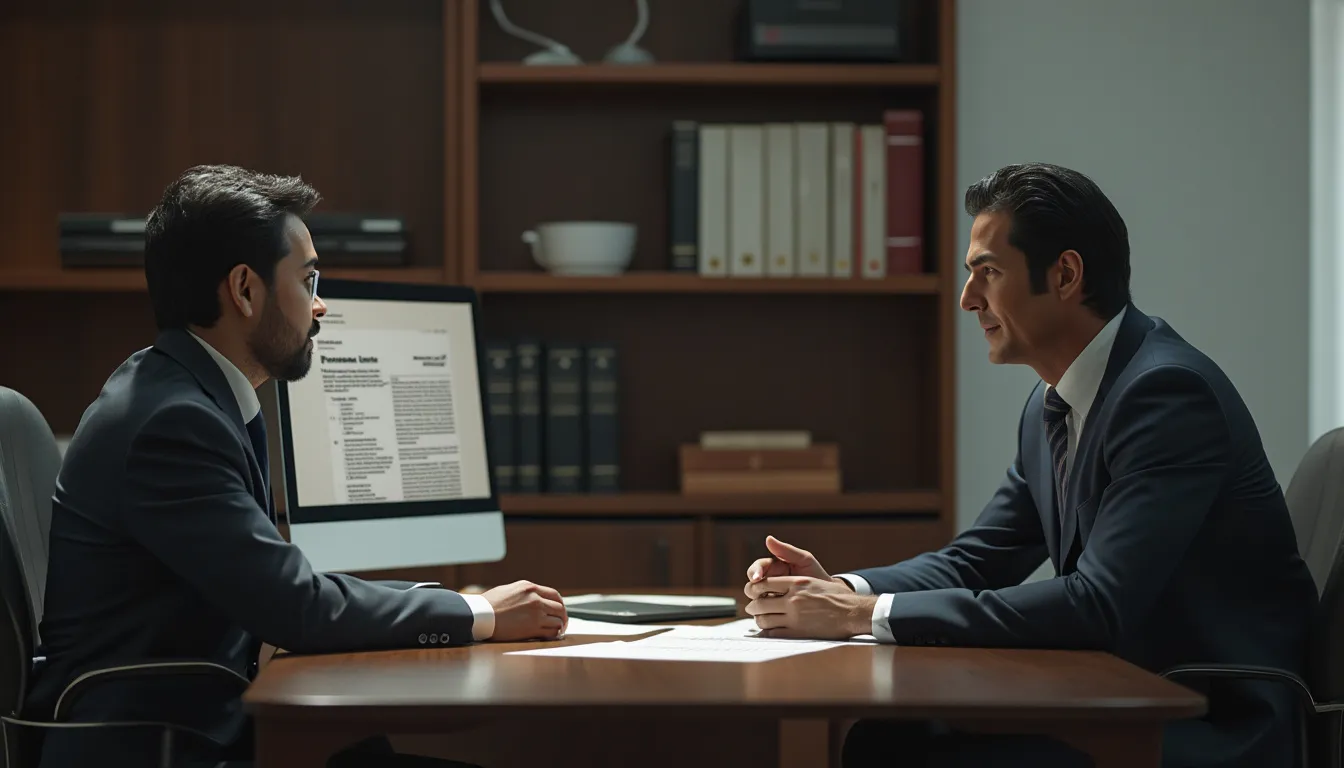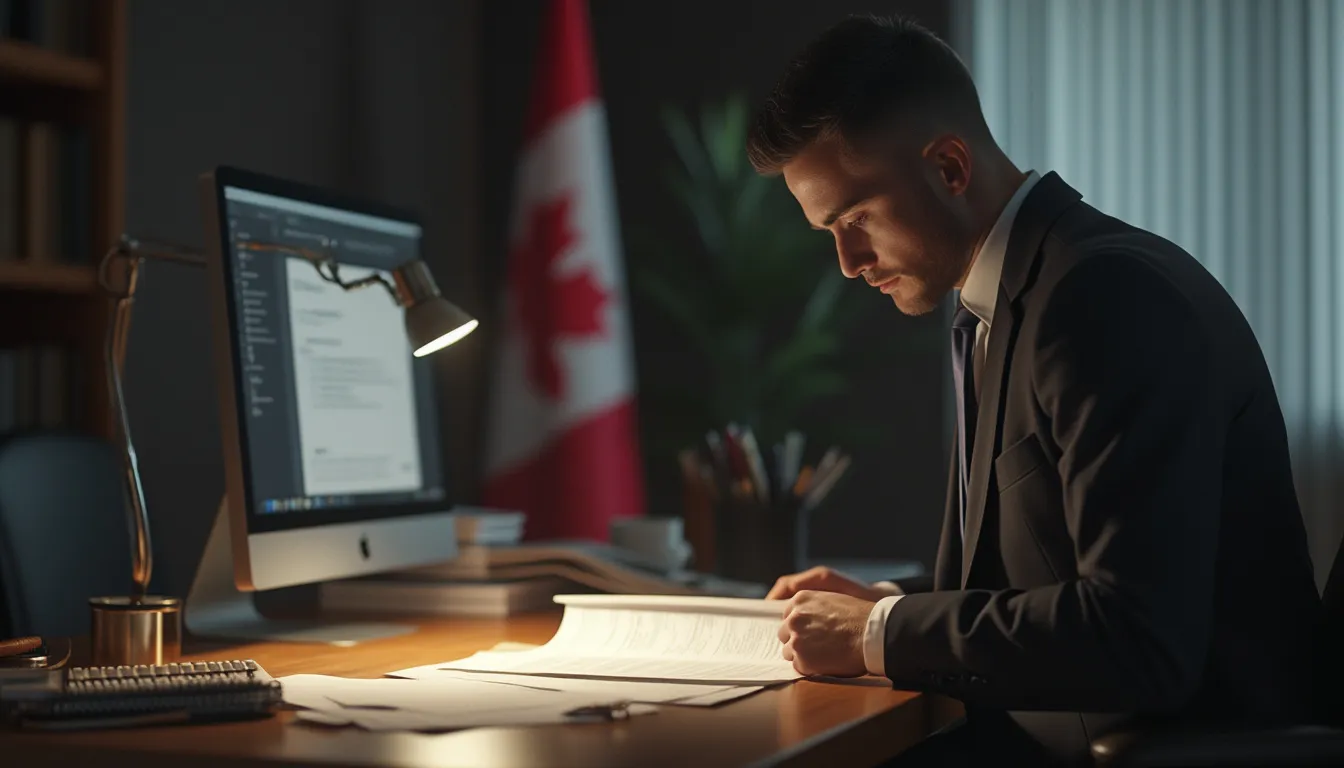Table of Contents
Understanding Procedural Fairness Letters in Canadian Immigration
For many aspiring immigrants, the journey to obtaining Canadian permanent residency (PR) is filled with excitement and hope. However, it can also be fraught with challenges, particularly when faced with a Procedural Fairness Letter (PFL) from Immigration, Refugees and Citizenship Canada (IRCC).
A PFL is more than just a formal communication; it is a critical tool in the immigration process. Its primary purpose is to ensure transparency and fairness by giving applicants an opportunity to address specific concerns or discrepancies identified in their application.
Receiving a PFL can be unsettling, but it is not the end of the road. It is a chance for applicants to clarify, correct, or provide additional information that could make a significant difference in the outcome of their application.
What is a Procedural Fairness Letter?
A Procedural Fairness Letter is issued by IRCC to inform applicants about potential issues that may lead to a negative decision. It is a safeguard mechanism designed to uphold the principles of natural justice, ensuring that applicants are given a fair opportunity to respond to any adverse information that could impact their case.
The letter typically outlines specific concerns or discrepancies that need to be addressed. These could range from inconsistencies in the application to missing documentation or credibility issues.
Why is a PFL Important?
The PFL process is a cornerstone of Canada’s immigration system, ensuring that decisions are made fairly and transparently. It gives applicants the chance to provide additional information, clarify misunderstandings, or rectify errors that could otherwise result in the rejection of their application.
By understanding the purpose and process of a PFL, applicants can better navigate the immigration process and improve their chances of a successful outcome.
Common Reasons for Receiving a Procedural Fairness Letter
While every application is unique, there are common reasons why applicants may receive a PFL. These include:
- Discrepancies in the application, such as inconsistencies in work history or educational qualifications.
- Missing information or incomplete submissions.
- Concerns about the credibility of the applicant’s statements or documents.
- Eligibility concerns, such as not meeting the residency obligation for PR card renewals.
- Criminal inadmissibility or security concerns.
- Questions about the genuineness of a relationship or the authenticity of documents.
- Allegations of misrepresentation or providing false information.
- Medical inadmissibility due to excessive healthcare costs.
Understanding these common reasons can help applicants proactively address potential issues before they receive a PFL.
The Impact of a PFL on Your Application
Receiving a PFL does not automatically mean that your application will be rejected. It is a formal notice that gives you the opportunity to address specific concerns and provide additional information that could positively influence the outcome of your case.
However, it is important to take a PFL seriously. Failing to respond adequately or missing the deadline can have serious consequences, including the refusal of your application.
The key to successfully navigating a PFL is to approach it with careful preparation and attention to detail. This includes understanding the issues raised, gathering the right documentation, and crafting a clear and concise response.
In the following sections, we will explore practical tips and strategies for avoiding a PFL, as well as how to respond effectively if you do receive one. Whether you are preparing your initial application or addressing concerns raised by IRCC, this guide will provide you with the insights and tools you need to navigate the process with confidence.

How to Respond to a Procedural Fairness Letter
Responding to a Procedural Fairness Letter requires careful attention to detail and a strategic approach. The goal is to address the concerns raised by IRCC effectively and provide sufficient evidence to support your case. Below is a step-by-step guide to help you craft a robust response:
- Read the Letter Carefully: Take the time to thoroughly understand the specific issues outlined in the PFL. Identify the key areas that require clarification or additional information.
- Gather Supporting Documents: Collect all relevant evidence that directly addresses the concerns raised. This may include additional identification, work records, employment letters, or any other documentation that validates your claims.
- Craft a Clear Response: Begin your response by acknowledging the concerns expressed in the PFL. Your letter should be straightforward, addressing each issue systematically. Avoid using jargon and ensure your language is clear and concise.
- Provide a Thorough Explanation: Offer detailed explanations for any discrepancies or missing information. If there were circumstances that led to errors or omissions in your initial application, explain them clearly. Be honest and transparent in your response.
- Attach Relevant Documentation: Ensure all supporting evidence is included with your response. Organize your documents neatly, making it easy for immigration officers to review them. This includes maintaining a logical order and labeling documents clearly.
- Review and Submit On Time: Double-check your submission for completeness and accuracy. Ensure you meet the deadline specified in the PFL, as failing to do so may result in the refusal of your application.
Importance of Professional Assistance
Receiving a Procedural Fairness Letter is a critical juncture in the immigration process. While it is possible to respond to a PFL on your own, seeking professional assistance from an immigration lawyer can significantly improve your chances of a successful outcome. An experienced legal professional can:
- Guide you through the complexities of responding to a PFL.
- Help you understand the implications of the issues raised.
- Assist in gathering and organizing the necessary documentation.
- Ensure your response is comprehensive and strategically framed.
- Represent you in further communications with IRCC, if required.
Immigration lawyers bring invaluable expertise and insight, helping you navigate the process with confidence. Their involvement can make a significant difference in the effectiveness of your response and the overall success of your application.
Processing Time for a Procedural Fairness Letter
The processing time for a Procedural Fairness Letter can vary significantly. On average, immigration officers may take anywhere from 30 days to over a year to review responses. The timeline often depends on the complexity of the issues raised and the efficiency of the applicant’s reply.
It is crucial for applicants to understand the potential reasons for receiving a PFL, as this knowledge is essential for preparing an effective response. A well-crafted and timely response not only addresses the concerns raised but also demonstrates the applicant’s commitment to the immigration process.
By understanding the purpose and process of responding to a Procedural Fairness Letter, applicants can effectively address concerns raised by immigration officers. This proactive approach improves the likelihood of a successful application and paves the way for a smoother immigration journey.

Conclusion
Receiving a Procedural Fairness Letter can be a challenging moment in the Canadian immigration process, but it is not the end of your journey. Understanding the purpose and significance of a PFL empowers you to address concerns effectively and strengthen your application. By taking a proactive approach, gathering the right documentation, and seeking professional guidance when needed, you can navigate this critical step with confidence.
A PFL is more than just a formal notice—it is an opportunity to clarify, correct, and improve your application. With careful preparation and a strategic response, you can overcome potential obstacles and move closer to achieving your goal of Canadian permanent residency. Remember, transparency, honesty, and thoroughness are key to a successful outcome.
Frequently Asked Questions (FAQs)
What is a Procedural Fairness Letter (PFL)?
A Procedural Fairness Letter is a formal notice from IRCC that outlines potential issues with your immigration application. It provides you with an opportunity to address these concerns before a final decision is made.
Why would I receive a Procedural Fairness Letter?
You may receive a PFL if there are discrepancies, missing information, or concerns about the credibility of your application. Common reasons include inconsistencies in your work history, missing documents, or eligibility concerns.
How do I respond to a Procedural Fairness Letter?
Respond by addressing each concern raised, providing clear explanations, and submitting supporting documentation. Ensure your response is thorough, well-organized, and submitted by the specified deadline.
What happens if I miss the deadline for responding to a PFL?
Missing the deadline can result in the refusal of your application. It is crucial to treat the deadline seriously and submit your response on time.
Do I need a lawyer to respond to a Procedural Fairness Letter?
While not required, consulting an immigration lawyer is highly recommended. They can help you understand the issues, prepare a strong response, and ensure your application is presented in the best possible light.
How long does it take to process a response to a PFL?
Processing times vary, ranging from 30 days to over a year, depending on the complexity of the issues and the completeness of your response. Be patient and ensure your response is as thorough as possible to avoid delays.




No comment